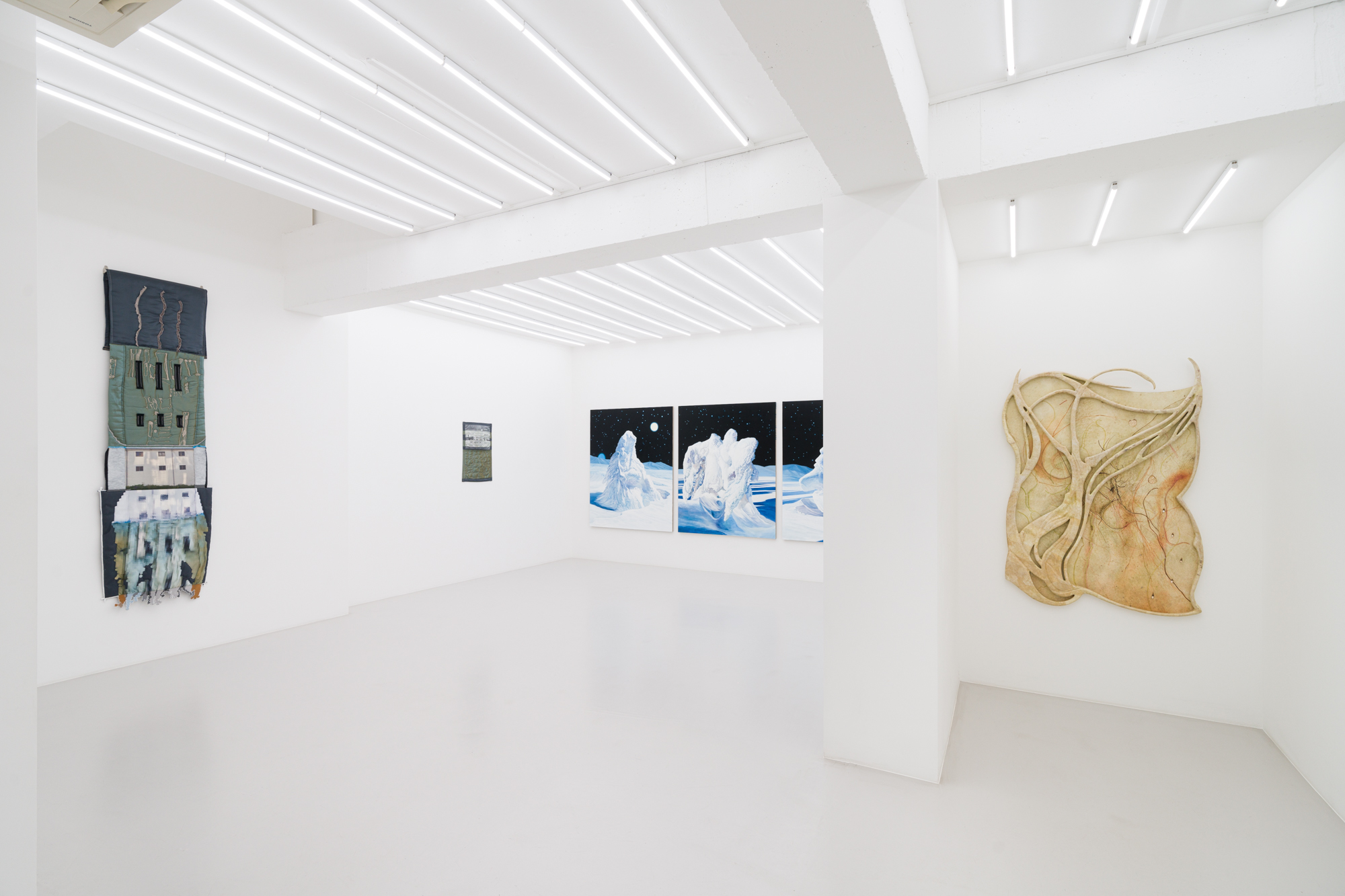소프트 퍼레이드
| [GALLERIES] PERROTIN SEOUL
2021. 6. 24 – 8. 13
클라라 크리스탈로바

작가가 서울 전시를 위해 새로 제작한 이번 작품들은 스웨덴 스톡홀름 북쪽 지방의 호수 옆 숲속에 자리한 작가의 가장 긴밀한 공간인 작업실에서 탄생하였다.
크리스탈로바의 작품 속 인물들은 우리의 감정들과 직접적으로 교감한다. 그는 조각의 가소성을 이용하여 기이한 일이 일어났거나 혹은 곧 일어날 듯한 아주 작은 세계를 구축하는 이야기꾼이다. 크 리스탈로바의 작품은 주로 수백년 전 과거에 뿌리를 둔 전통적인 조각 방식에 기반한다.
전시 개막에 맞춰 새롭게 출간한 크리스탈로바의 단행본 또한 페로탕 북스토어에서 구매가 가능하다. 이번 단행본은 스위스 루체른 미술관의 관장인 파니 팻저의 에세이가 수록되었다.
크리스탈로바의 예술 속 영감의 원천은 구체적이고 순차적인 내러티브로 구성된 것이 아니며, 비범하고 비현실적인 팩트로 구성된 것 또한 아니다. 그의 영감은 오히려 조금은 특이하지만, 궁극적으로는 꽤 흔하고 정상적인 “보통”의 존재를 통해 자극되기에 우리의 현실 속 한 부분에 존재하는 억제되지 않은 무의식을 엿볼 기회를 준다. 크리스탈로바가 만든 등장인물들은 그 자체만의 내러티브를 기반으로 그를 따른다. 엄연히 평범한 세상과 연결되어있는 그들은 우리의 무의식을 향해 손을 뻗어 한편으론 우리를 안심시킨다고 할 수 있다.

작가는 작품의 크기를 조절하여 그의 오브제들이 절대 사랑스러워 보이지 않도록 한다. 우리는 귀여운 쥐 가족의 세상을 위에서 내려다보는 것이 아니라 크리스탈로바만의 예술의 효과를 경험하는 것이다. 위협적이지는 않게 느껴지는 그의 작품 세계는 눈높이에서 벌어지는 만남이며, 이 높이를 맞추기 위해 작품은 받침대나 무대, 혹은 선반에 주로 놓인다. 손으로 작업한 흔적이 눈에 띄는 점토와 질감이 드러나는 유약은 크리스탈로바 작품의 외적 특성이자 그 작품만의 본질이 존재한다는 느낌을 심화시킨다. 이 작품들은 도자기의 외적 특징이 있는 작은 장신구들이 아니라 주체적이고 확신 있는 하나의 독립체들인 것이다. 크리스탈로바의 조각상들은 우리와 소통하며 의식적으로 쳐다보거나 눈을 피하고, 우리를 향해 서기도, 멀어지기도 하며, 내성적인 모습과 눈에 띄게 자신들을 선보이는 모습을 보인다. 조각들은 우울해 하기도 하고, 피곤해하고, 참을성있게 기대감에 차있으며, 꽤 성가신 모습으로 있기도 하다. 그의 모든 조각은 따스하지만 감성적이지는 않다.
우리가 귀를 기울이면 조각들이 말을 걸어온다. 우리는 가족의 비밀을 알아내기 위해 닫힌 여행 가방을 엿듣거나 심문할 수 있고, 사슴과 나무의 이상한 관계 속에서 부모님의 결혼생활이나 본인의 개인적이고 친밀한 관계의 문제점을 찾을 수 있으며, 사과의 짓궂은 기분에서 나타나는 기운을 느낄 수 있다. 이 모든 것이 우리 안에 존재한다.

페로탕 서울
서울시 종로구 팔판길 5
+82 2 737 7978











